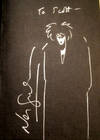
The island of Crete and the adjacent islands of the Aegean with the new island of Santorini ... "Insuls Creta nunc Candia in sua IV Territoria distinicta, cum aliqoud adjacentibus Ægei maris Insulis imprimis Nova Santorini insula modo ante XXVII annos ex abysso marsi emersa..." "Creta nunc Candia
by Lotter Conrad Tobias
- Used
- Condition
- See description
- Seller
-
Nafplion, Greece
Payment Methods Accepted
About This Item
Greece: Augsburg, Lotter Conrad Tobias 1772. Copper engraved map of Crete with View of Iraklion after Seutter from Lotters "Atlas Novus." . Original old colour; verso blank The map shows the island of Crete, taken from the Homann map of 1712 [ Zacharakis 1641/1879] with the a long text beside the newly emerged island at Santorini following the volcanic eruption of 25th May 1707: "In 1707, activity began again, the small when two cones appeared. They were called Aspronisi and Macronesi. Those were united in the course of the following five years by an island which formed between Palea and Small Kameni, much larger and higher then either and was called Nea (New) Kameni .This island, is the youngest island in Greece."[Santorini Living ] Below is a panaromic view of Iraklion, black & white as issued. The map was first published by Lotter's father-in-law Matthaüs Seutter in his "Atlas Novus" in 1728 who took the lower part of Homann's map re-engraved the cartouche and text and added the scale to the right half of the map. Seutter then added the panoramic view below the map. . Seutter is renowned for his detailed plans and prospects of cities which appeared in his "Atlas Novus". Decorative title cartouche with imprint of Lotter replacing that of Seutter. The vignette shows a Janissary overseeing 2 turkish sailors loading cargo; grapes and wine barrels adorn the pedestal; in the background a large sailing ship and on the mountains a herd of Kri-Kri the indiginous capricorn of Crete. The view with title to sky. Good dark impression; 4 small worm holes near title of view, 2 more near seashore of castle. The map was bound in an atlas at he left margin, but folded at centre [ hence the pairs of wormholes]; crease to left side up to the cartouche and also to upper right corner; light soiling to margins, ink stamp removed to lower right margin. A good example of a scarce prospect/map. Tobias Conrad Lotter (1717 - 1777) was a German engraver and map publisher. He married the daughter of prominent map publisher Matthaus Seutter, the Elder. Upon Seutter's retirement Lotter took control of the firm and republished many of his maps with minor updated and changes. In time, Lotter became one of the most prominent mid 18th century map publishers working in the German school. After his death in 1777, the firm was taken over by his son, Mathias Albrecht Lotter who republished and updated many of his father's maps. Seutter was an engraver, globe-maker and publisher. Born in Augsburg in 1685, the son of a goldsmith. Seutter began his studies in Nuremberg in 1697, apprenticed as an engraver to Johann Baptist Homann. in 1707 later he returned to Augsburg subsequently working in the publishing house of Jeremias Wolff in the city. He founded the Seutter publishing house and print shop in 1710, producing maps, atlases, and globes., which became a primary competitor to Homann. Very few original maps were printed there, as Augsburg at that time had no university and none of the necessary connections to the fields of mathematics or the natural sciences. Therefore Seutter copied the work of other cartographers, making his own engravings based on their models (approximately 500 pieces). His "Atlas Geographicus oder Accurate Vorstellung der ganzen Welt' appeared in 1725 with 46 maps: the "Atlas Novus" various editions in 1728, 1730, 1736, 1742; the "Grosser Atlas" in 1734 with 131 maps, and the pocket atlas "Atlas minor in 1744 with 64 maps. After Matthäus Seutter died in 1757, his son, Albrecht Karl, his son-in-law Conrad Tobias Lotter, and his business partner Johann Michael Probst ran the business for five more years. Johann Baptist Homann (1664 – 1724) from 1687 Homann worked as a civil law notary in Nuremberg. He soon turned to engraving and cartography; in 1702 he founded his own publishing house. Homann acquired renown as a leading German cartographer, and in 1715 was appointed Imperial Geographer by Emperor Charles VI. Giving such privileges to individuals was an added right that the Holy Roman Emperor enjoyed. In the same year he was also named a member of the Prussian Academy of Sciences in Berlin. Of particular significance to cartography were the imperial printing privileges (Latin: privilegia impressoria). These protected for a time the authors in all scientific fields such as printers, copper engravers, map makers and publishers. They were also very important as recommendation for potential customers. In 1716 Homann published his masterpiece "Grosser Atlas ueber die ganze Welt" Numerous maps were drawn up in cooperation with the engraver Christoph Weigel the Elder, Homann died in Nuremberg. He was succeeded by the Homann heirs company, in business until 1848, known as "Homann Erben", "Homanniani Heredes", "Heritiers de Homann" abroad. Zacharakis:2103/1308 Greece Crete Candia Iraklion Santorini
Reviews
(Log in or Create an Account first!)
Details
- Bookseller
- Mary Louise Bryan/Paralos Gallery
(GR)
- Bookseller's Inventory #
- 2526
- Title
- The island of Crete and the adjacent islands of the Aegean with the new island of Santorini ... "Insuls Creta nunc Candia in sua IV Territoria distinicta, cum aliqoud adjacentibus Ægei maris Insulis imprimis Nova Santorini insula modo ante XXVII annos ex abysso marsi emersa..." "Creta nunc Candia
- Author
- Lotter Conrad Tobias
- Book Condition
- Used
- Publisher
- Augsburg, Lotter Conrad Tobias 1772
- Place of Publication
- Greece
Terms of Sale
Mary Louise Bryan/Paralos Gallery
30 day return guarantee, with full refund including original shipping costs for up to 30 days after delivery if an item arrives misdescribed or damaged.
About the Seller
Mary Louise Bryan/Paralos Gallery
Biblio member since 2013
Nafplion
About Mary Louise Bryan/Paralos Gallery
Dealer in Antiquarian Maps Prints & Books with over 25 years experience. Shop in Historic centre of Nafplion Greece; Internet site Exhibiter at London Map Fair and at fairs around Europe. Member of the Antiquarian Booksellers Association & ILAB
This Book’s Categories
Also Recommended
-

Save 10% on every purchase!
Join the Bibliophiles’ Club and start saving 10% on every book.
$29.95 / Year




![[Map] "City Of Lawrence," from Atlas of Douglas Co. Kansas. [Five Map Sheets, Comprising Pages 23-38 ONLY]](https://d3525k1ryd2155.cloudfront.net/h/451/955/919955451.0.m.jpg)

